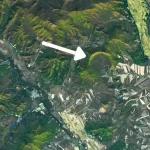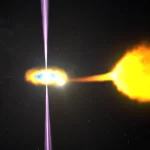Key Takeaways:
- Scientists are envisioning a modern Noah’s Ark on the moon, safeguarding reproductive cells from 6.7 million species.
- This lunar ark acts as a global insurance policy against potential Earth disasters, with completion anticipated within three decades.
- Unique challenges include microgravity, high radiation levels, and extreme temperature variations on the moon.
- The ark will be housed in over 200 lava tubes beneath the moon’s surface, providing natural insulation.
- The project’s success relies on missions like SphereX to explore and gather crucial data about lunar lava tubes.
In a bid to ensure the survival of life on Earth, a groundbreaking project at the University of Arizona is proposing a 21st-century rendition of Noah’s Ark, set on the moon. Rather than hosting pairs of animals, this lunar ark will house cryogenically frozen reproductive cells from a staggering 6.7 million species found on our planet.
Spearheading this venture is Dr. Jekan Thanga, an assistant professor at the University’s Department of Aerospace and Mechanical Engineering, who views this endeavor as a global insurance policy against potential extinction threats faced by human civilization.
The Svalbard Global Seed Vault in Norway serves as an Earth-based counterpart to this lunar ark, currently safeguarding over a million crop seed samples. However, storing a diverse array of gametes, spores, and seeds on the moon presents unique challenges such as microgravity, intense radiation, and fluctuating temperatures.
To address these hurdles, Thanga’s team plans to situate the lunar ark within the moon’s extensive network of lava tubes, offering natural protection against the harsh lunar environment. Much like Svalbard’s mountain-embedded storage, these tubes offer a secure location for this groundbreaking facility.
While the lunar ark might sound like science fiction, Thanga asserts that it is entirely feasible and could materialize within the next thirty years. The initial step involves sending a mission called SphereX to explore the lunar lava tubes and gather crucial data. Robots deployed from a nearby lander will navigate the tubes, providing essential insights into their layout, temperature, and geological composition.
The envisioned lunar ark structure involves the installation of an elevator shaft at one of the existing pit entrances to the lava tube. This shaft will serve as the entry and exit point to a series of 32 cryopreservation modules, resembling upright cylinders arranged in 16 rows. These modules will preserve reproductive cells, allowing for easy retrieval by robots or astronauts in a manner akin to a library system.
Maintaining the cells at the correct temperatures (-292 degrees Fahrenheit for reproductive cells and -320 degrees Fahrenheit for stem cells) requires cryogenic coolers within the storage modules. Additionally, a spinning mechanism employing centrifugal force will prevent cell clumping and cold spot formation, ensuring stability.
Despite the challenging lunar conditions, evidence suggests that the preserved samples will remain viable. Studies have shown that plants in radioactive environments near the Chernobyl nuclear power plant exhibited minimal protein alterations. Moreover, healthy mice offspring were produced from sperm cells stored aboard the International Space Station for nearly six years.
The emergence of private companies like SpaceX and Blue Origin, driving down space launch costs, further enhances the feasibility of the lunar ark project. Thanga estimates that around 250 rocket launches would be needed to transport specimens from the 6.7 million species, compared to the 40 launches required for the ISS.
The team is currently planning an experiment involving the launch of two cryopreservation pouches into space, each containing 500 samples from a single animal species. This test aims to demonstrate successful cryopreservation for up to seven days in orbit, gauging the survivability of the samples upon return to Earth.
Realizing this lunar ark comes with a considerable price tag, with NASA estimating about $700 per pound for Earth orbit payloads. To mitigate costs, scientists are exploring the utilization of moon rocks instead of conventional building materials, necessitating a lunar rock mining operation and processing center.
Preserving life in the face of potential disasters, this lunar ark project represents a bold step towards ensuring the continuity of Earth’s rich biodiversity for generations to come.


